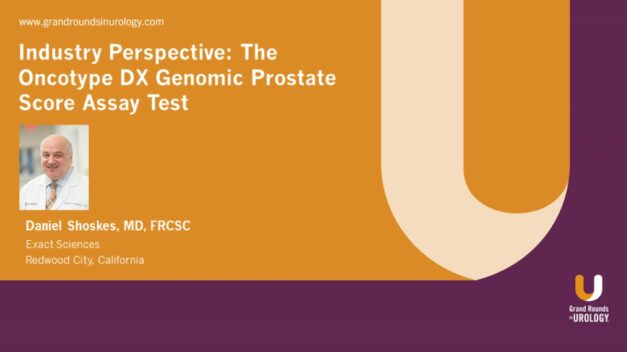A Biochemical Definition of Cure Following Brachytherapy of Prostate Cancer
As part of a special course on brachytherapy for prostate cancer from the American Brachytherapy Society (ABS) and Grand Rounds in Urology, Juanita M. Crook, MD, FRCPC, Professor of Radiation Oncology at the University of British Columbia in Kelowna, discusses the development of a biochemical definition of cure following low-dose-rate (LDR) prostate brachytherapy. She begins with some background, explaining that the interpretation of post-radiation PSA values has been challenging. She relates that the 1996 ASTRO consensus conference defined biochemical failure as 3 consecutive rises after the nadir with failure backdated to midway between the nadir and the first rise, while the 2005 Phoenix consensus conference defined biochemical failure as 2 ng/ml > nadir, a definition still widely used today. Dr. Crook emphasizes that neither definition was meant to be a trigger for intervention, and neither attempted to define cure. She then discusses research on the importance of PSA nadir in LDR brachytherapy which showed that if PSA at 4 years was less than 0.2 to 0.4 ng/ml, patients tended to do well, but if it was greater than 1.0, the majority were going to fail. Dr. Crook considers another study on long-term PSA stability after LDR brachytherapy which found that 86% of patients had stable PSA at a median followup of 89 months. She also briefly notes that a study of intermediate-risk patients undergoing external beam radiation therapy (EBRT) + high-dose-rate brachytherapy boost found similar results to the studies of LDR brachytherapy regarding the importance of PSA nadir. Dr. Crook then goes into detail about a study she and her colleagues conducted to define a biochemical definition of cure following LDR brachytherapy by identifying a PSA threshold value at an intermediate follow-up time that is associated with long-term (10-15 year) freedom from prostate cancer. She explains that by using prospectively-collected data sets combined from 7 institutions, she and her colleagues were able to determine that patients with a PSA ≤ 0.2 ng/ml by 4-5 years have a 99% probability of being free of clinical failure at 10-15 years. Dr. Crook concludes that PSA ≤ 0.2 ng/ml should be adopted as biochemical definition of cure for comparison with surgical series, but highlights that those patients not achieving this threshold PSA should not be considered as having “failed” but should continue to be monitored with the understanding that they are at higher risk of subsequent clinical failure.
Read More

